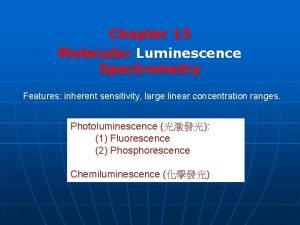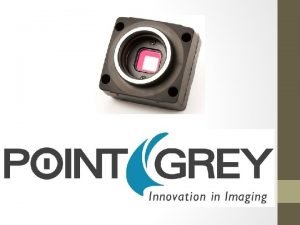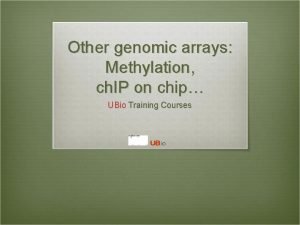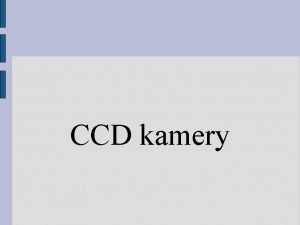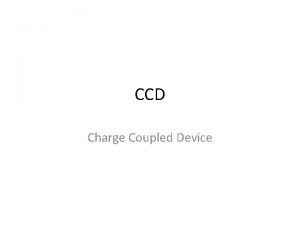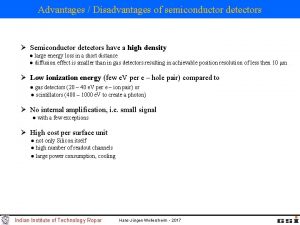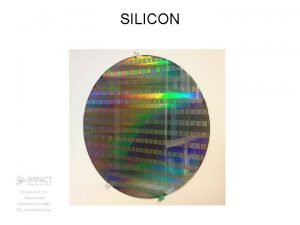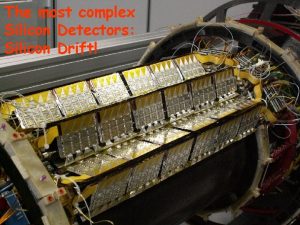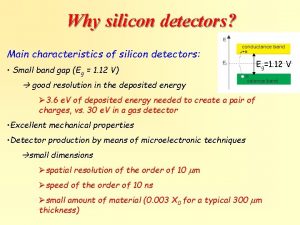CCD Detectors CCDcharge coupled device Silicon semiconductor chip







- Slides: 7

CCD Detectors • CCD=“charge coupled device” – Silicon semiconductor chip – array of up to crossed electrodes -> potential wells – current models: up to 2048 x 2048 wells trap photoelectrons • Readout method: – Electronics adjust electrode potentials cyclically to shift charge from one electrode to the next: “bucket brigade”. Bottom row read out, then all others shifted down simultaneously. Cooled by LN 2 Amplifier: • takes charge from corner pixel • thermal noise with fast readout ADC Analogue-to-digital converter: • Converts voltage to digital units (ADU) • a. k. a. data numbers (DN) Memory: • Stores image

The pros and cons of CCDs • Advantages: – Quantum efficiency (QE) ~ 80 % (400 nm - 1 m) – Linearity to (better than) << 0. 1 % – Dynamic range: Pixel well depth ~ 106 e–, RMS readout noise ~ 4 to 10 e– – Fixed format pixel grid – Can extend blue response (thinned back-illuminated chip or coronene coating) • Disadvantages: – – – – Readout noise 4 to 10 e– RMS Slow readout ≥ 10 to 100 s Cosmic-ray hits limit exposure times Saturation via wells filling up and limited ADC range Charge “bleeding” down columns, then across rows Blemishes (charge traps, hot pixels) Gaps between pixels

CCD calibration • Two main steps: Raw image – bias subtraction – flat-field division “Bias frame” = zero-exposure image • Measures constant signal added by readout electronics “Flat-field frame”: • Measures pixel-to-pixel sensitivity variations under uniform illumination.

Measuring bias and readout noise • Calibrate by taking mean or median of many zero-exposure images and/or • “Overscan” the CCD by reading out additional rows of data for which no physical pixels exist. • Cosmic ray hits must be removed, e. g. by taking median of many frames. • “Readout noise” = (Bxy): • Voltage drift may cause <Bxy> to vary in time: • Need to scale bias frame to match overscan.

Flat-field division • Direct imaging: – twilight sky or inside of telescope dome – OR median of many dark sky frames of different fields (median eliminates stars) • Spectroscopy: – spectrum of internal comtinuum source (tungsten lamp) • Pixel-to-pixel sensitivity variations => Fxy is never uniform, even with uniform illumination. • Take 10 to 30 flats with high exposure levels – – subtract bias form each scale to common mean value (if lamp/sky brightness drifts) take average or median (to reject cosmic-ray hits) fit a polynomial to flat field and divide so that <Fxy> ~ 1. This preserves data numbers/photons while correcting pixel-topixel variations.

Measuring the gain of a CCD -- 1 • The gain of a CCD is the number of photoelectrons per ADU (DN). • Let X be a random variable representing number of ADU recorded in a pixel. • There are 3 types of noise that contribute to variance 2(X) – Readout noise 2 – Poisson noise : number of photons detected = X / G – “Scale noise” with variance f 2 X 2 -- usually dealt with by flatfielding • At low count-rates, readout noise (=constant) dominates. • At high count-rates, Poisson noise ~X 1/2 dominates.

Measuring the gain of a CCD -- 2 • Take several flats with different levels of illumination. • Divide into sub-areas and measure <X>, 2(X) locally • Make log-log scatterplot of (X) vs. <X>: • Determine values of ( 0, G) that give best-fitting curve of form: /2 1 = pe slo 4. 2 In this illustrative case we find readout noise = 4. 2 DN and gain G = 3. 2 electrons per DN G=1 G=3. 2 G=10
